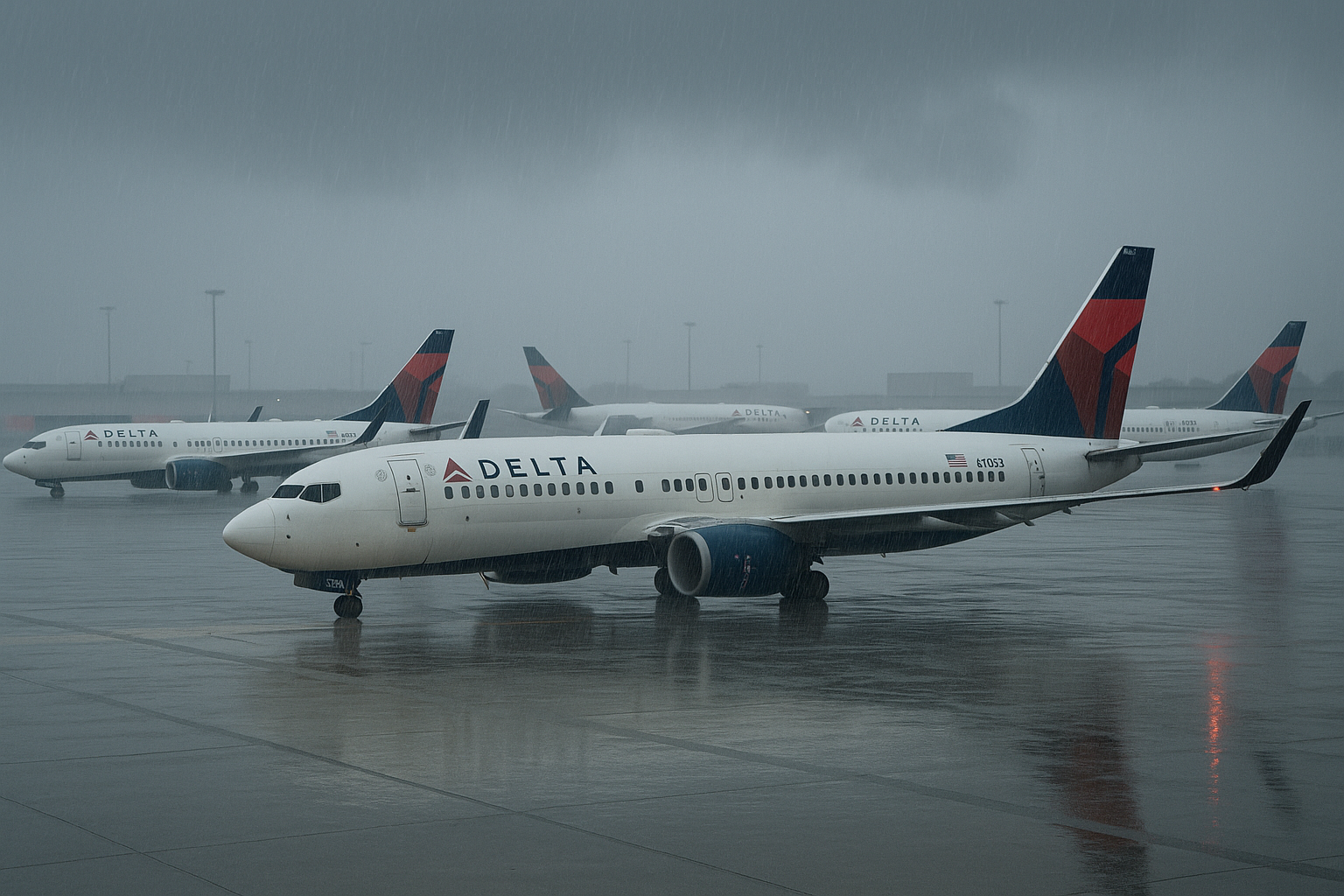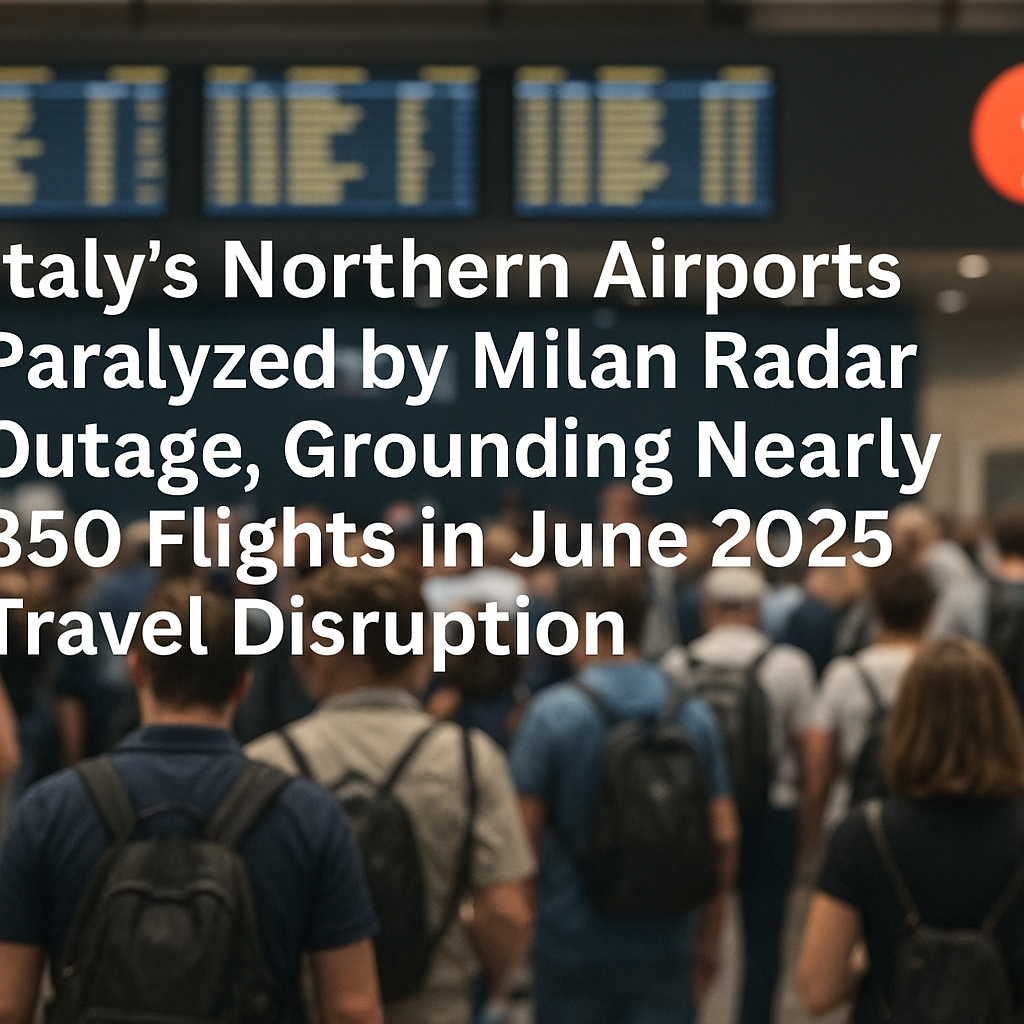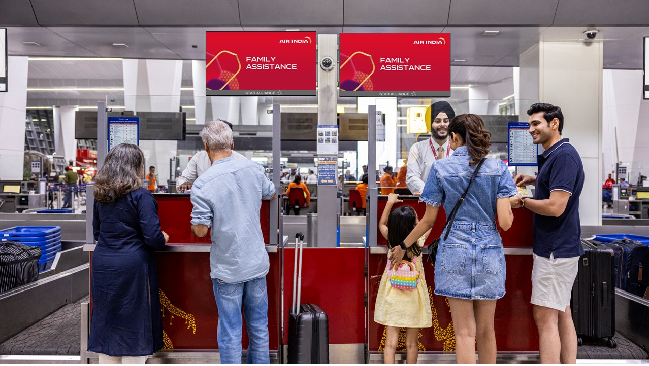Northern Italy was plunged into travel chaos on the evening of June 29, 2025, when a major radar and communications outage at Milan’s Area Control Centre triggered widespread disruption, grounding almost 350 flights at key airports including Malpensa, Bergamo, Turin, and others. The failure, attributed to a critical data transmission breakdown in Enav’s air traffic management systems, forced the suspension of takeoffs and landings across Lombardy, Piedmont, Liguria, and the Aosta Valley, stranding thousands of passengers during a peak summer travel period.
The outage occurred just before 9:00 PM local time, causing a sudden halt in air traffic operations managed by Enav, Italy’s national air navigation agency. Unable to safely control aircraft movements, air traffic controllers were compelled to stop all flight operations temporarily, resulting in cascading flight cancellations and delays across multiple airports serving northern Italy.
Widespread Impact on Northern Italy Airports and Airlines
The radar failure affected 366 flights in total, with 326 delayed and 40 outright cancelled. Malpensa International Airport (MXP), Italy’s second busiest airport, was hit hardest, facing 190 delays and 23 cancellations alone. Bergamo’s Orio al Serio Airport (BGY) logged 114 delays and 13 cancellations, while Turin-Caselle Airport (TRN) suffered 22 delays and 4 cancellations.
Prominent airlines experienced severe operational setbacks:
- Ryanair faced more than 80 delays and 13 cancellations, especially at Bergamo where it maintains a dominant presence.
- easyJet reported 48 delays and 6 cancellations, impacting flights throughout Italy and Europe.
- ITA Airways, TAP Air Portugal, SAS, and Vueling Airlines also reported multiple delays and flight changes.
- Other affected carriers included Emirates, Air France, Qatar Airways, Delta, United, and Aegean Airlines, with passengers sometimes stranded without adequate assistance.
Travelers described overcrowded terminals, overwhelmed check-in counters, and little communication regarding rebooking options. Air conditioning failures at Malpensa compounded passenger discomfort during the long wait.
The Fragility of Italy’s Air Traffic Control Infrastructure
The incident has exposed critical vulnerabilities within Italy’s air navigation systems. Experts highlight that a single point of failure in Milan’s radar and communications setup brought multiple airports across four regions to a grinding halt, underlining the risks of over-centralized air traffic control.
Officials at Enav acknowledged the severity of the outage, describing it as one of the most serious technological failures in recent memory. They confirmed partial service restoration by late Saturday night, yet the backlog of delayed flights and disrupted schedules extended well into Sunday.
Calls for urgent investment in system redundancies, cybersecurity, and modernization of air traffic infrastructure are intensifying to prevent similar disruptions in the future—especially crucial during summer’s high travel demand.
Passenger Experience and Industry Response
Passengers stranded during the outage reported frustration over scarce assistance and lack of clear updates. Social media platforms were flooded with complaints from travelers demanding better communication and compensation.
Airlines scrambled to adjust schedules and rebook affected customers, but many faced challenges managing the surge of last-minute changes amid limited available flights.
Malpensa and Bergamo airport authorities committed to improving passenger services during ongoing recovery efforts, enhancing information dissemination and support for those impacted.
Regional and Economic Implications
Northern Italy’s airports are vital hubs connecting Italy with European and global destinations. Disruptions of this scale threaten to dent Italy’s reputation as a major travel destination, potentially impacting tourism revenue and business travel at a critical time.
The timing is particularly damaging as the summer travel season peaks, with airports expecting high passenger volumes throughout July and August. Local economies, especially those dependent on tourism, face potential revenue losses due to cancellations and traveler uncertainty.
Looking Ahead: Preventing Future Disruptions
The Milan radar outage serves as a wake-up call for the aviation sector. Enav and Italian transport authorities have pledged a full investigation into the root causes and committed to strengthening system resilience. Plans include upgrading hardware, implementing backup systems, and fostering better coordination among regional air traffic centers.
Industry experts emphasize the necessity of adopting newer technologies and diversifying control centers to avoid centralized points of failure. As air travel demand surges post-pandemic, ensuring robust and reliable air traffic management becomes paramount.
Flight Disruption Summary:
| Airport | Delays | Cancellations |
|---|---|---|
| Malpensa International (MXP) | 190 | 23 |
| Bergamo Orio al Serio (BGY) | 114 | 13 |
| Turin-Caselle Airport (TRN) | 22 | 4 |
Major Airlines Impacted:
- Ryanair
- easyJet
- ITA Airways
- TAP Air Portugal
- SAS
- Vueling Airlines
- Emirates
- Air France
- Delta Air Lines
- United Airlines
- Aegean Airlines
For travelers planning flights through northern Italy airports, it is strongly advised to check flight status regularly with airlines and prepare for potential delays or cancellations.
For more travel news like this, keep reading Global Travel Wire



















